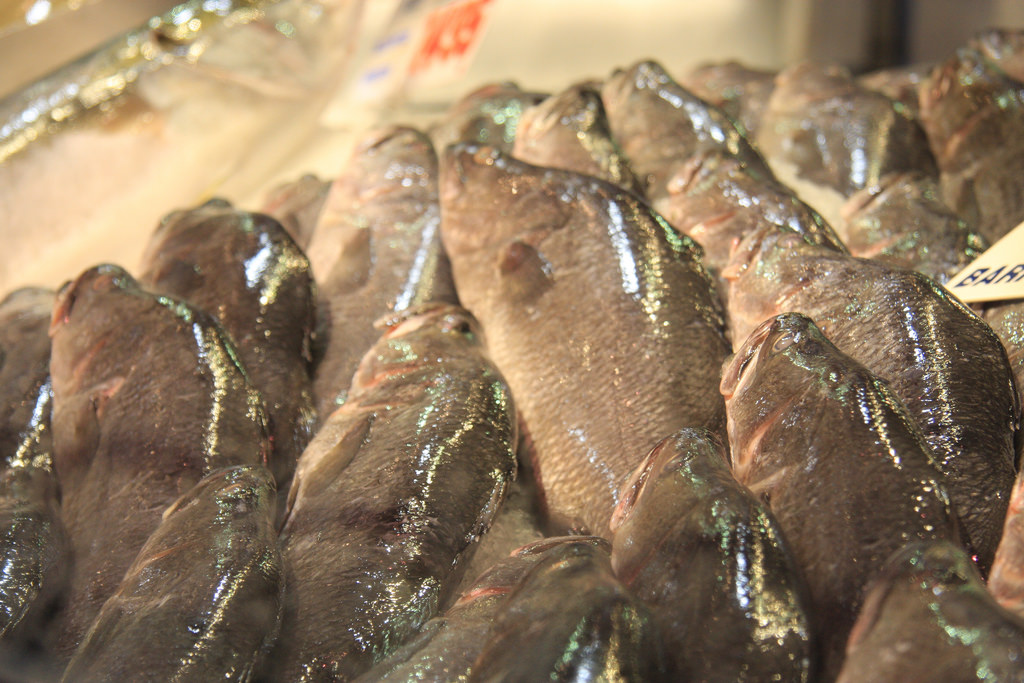Barramundi – Lates calcarifer, Asian sea bass.

Identifying Characteristics
- Elongated body, with a prominent upper jaw.
- Large scales that are ctenoid (toothed on the edges).
- During their life cycle they migrate from freshwater to brackish water to spawn. They are hermaphrodites, where the males turn into females at 5 or 6 years, requiring them to be in saltwater for this to happen.
- Barramundi feed on small fish, insects and crustaceans, and also on other barramundi.
Range and Habitat
- They range throughout the Persian gulf, China, Japan, Papua New Guinea, and Northern Australia.
- Barramundi live in the demersal zone, close to the ocean floor.
- They live in fresh and saltwater fish, in coastal areas, lagoons, estuaries, lakes, and rivers.
Market Forms
- These fish are important to the commercial and sport fishing industries.
- Their flesh turns from a pinky-white color to white with large flakes. The flavor is sweet and mild, and can be compared to a Chilean seabass with its oil content.
- Barramundi is often cooked with skin on as it cooks up nicely and can stand up to a wide range of cooking methods.
Image of barramundi courtesy russellstreet via Flickr CC by SA 2.0 license.
